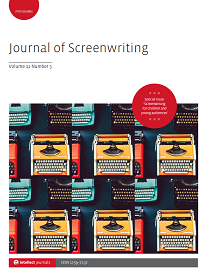
Full text loading...

This review article examines research into the conceptualization and development of narrative-based virtual reality (VR) experiences with the aim of articulating the overlaps and differences in various disciplinary approaches. The terms ‘conceptualization’ and ‘development’ are used to encompass a range of activities (represented by terms such as ‘screenwriting’, ‘design’, ‘narrative design’ and ‘prototyping’) that might be associated with VR development by researchers from fields of screenwriting and broader screen studies, game studies, interactive digital narrative (IDN) and human–computer-interaction (HCI) fields. The focus of the article is research produced within the last decade, this coinciding with the resurgence of narrative-based VR production driven by affordable, consumer-grade technologies that emerged around 2015. While narrative-based VR is not new, recent technological advancements have enabled greater degrees of realism and an affordable consumer price point, making VR more appealing as an entertainment medium. This has led to an explosion of interest in narrative-based VR experiences in film festivals and conferences, with academic scholarship seeking to understand new practices and tools for creating storytelling experiences with the medium. Through an extensive survey of recent literature, this article seeks to answer the question of how we as researchers can conceive of VR conceptualization and development going forward. The analysis highlights the use of differing terminology across disciplines, which is often linked to understandings of adjacent or earlier media, processes and narrative models explored in these fields. Going forward, the article argues for an interdisciplinary research lens that foregrounds the embodied nature of VR storytelling.

Article metrics loading...

Full text loading...
References


Publication Date:
https://doi.org/10.1386/josc_00132_1 Published content will be available immediately after check-out or when it is released in case of a pre-order. Please make sure to be logged in to see all available purchase options.